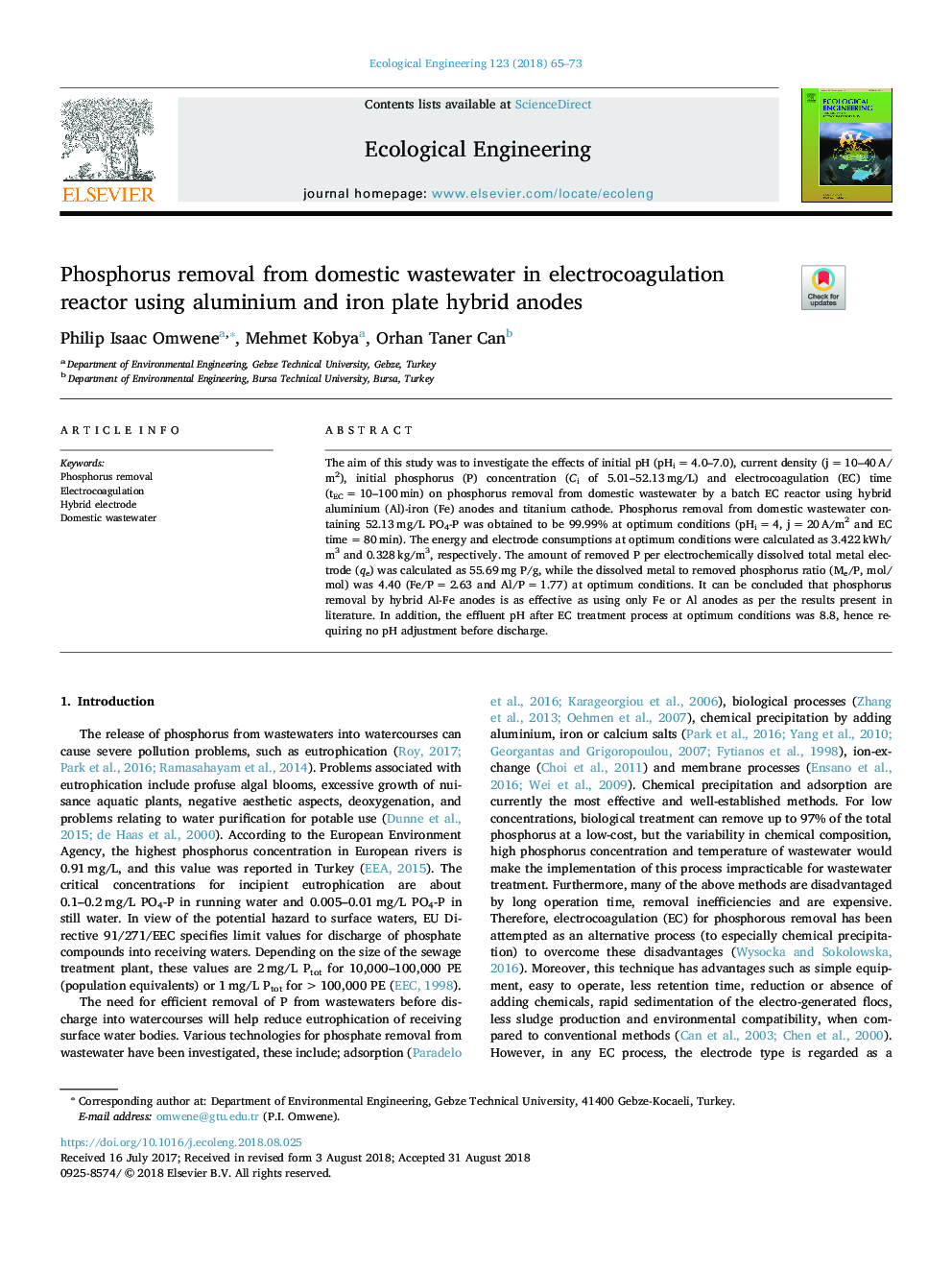| Article ID | Journal | Published Year | Pages | File Type |
|---|---|---|---|---|
| 10144343 | Ecological Engineering | 2018 | 9 Pages |
Abstract
The aim of this study was to investigate the effects of initial pH (pHiâ¯=â¯4.0-7.0), current density (jâ¯=â¯10-40â¯A/m2), initial phosphorus (P) concentration (Ci of 5.01-52.13â¯mg/L) and electrocoagulation (EC) time (tECâ¯=â¯10-100â¯min) on phosphorus removal from domestic wastewater by a batch EC reactor using hybrid aluminium (Al)-iron (Fe) anodes and titanium cathode. Phosphorus removal from domestic wastewater containing 52.13â¯mg/L PO4-P was obtained to be 99.99% at optimum conditions (pHiâ¯=â¯4, jâ¯=â¯20â¯A/m2 and EC timeâ¯=â¯80â¯min). The energy and electrode consumptions at optimum conditions were calculated as 3.422â¯kWh/m3 and 0.328â¯kg/m3, respectively. The amount of removed P per electrochemically dissolved total metal electrode (qe) was calculated as 55.69â¯mg P/g, while the dissolved metal to removed phosphorus ratio (Me/P, mol/mol) was 4.40 (Fe/Pâ¯=â¯2.63 and Al/Pâ¯=â¯1.77) at optimum conditions. It can be concluded that phosphorus removal by hybrid Al-Fe anodes is as effective as using only Fe or Al anodes as per the results present in literature. In addition, the effluent pH after EC treatment process at optimum conditions was 8.8, hence requiring no pH adjustment before discharge.
Related Topics
Life Sciences
Agricultural and Biological Sciences
Ecology, Evolution, Behavior and Systematics
Authors
Philip Isaac Omwene, Mehmet Kobya, Orhan Taner Can,
